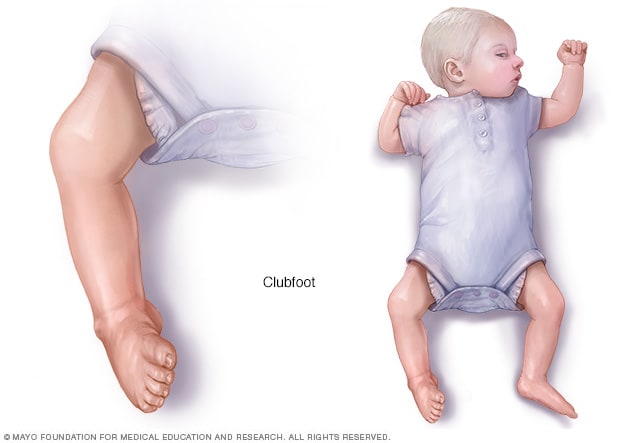Clubfoot is a birth defect that causes a child’s foot to point inward instead of forward. The condition is normally identified after birth, but doctors can also tell if an unborn baby has clubfoot during an ultrasound. Although the condition usually affects only one foot, it’s possible for both feet to be affected. Clubfoot can sometimes be corrected through stretching and bracing, but surgery may be necessary in severe cases.
How Does Clubfoot Form?
The exact cause of clubfoot is unknown, but doctors agree that a family history of clubfoot increases the likelihood that a child will be born with the condition. Also, mothers who smoke and drink during pregnancy are more likely to give birth to a child with a clubfoot or clubfeet. Clubfoot may also occur as part of a congenital skeletal abnormality, such as spina bifida.
Diagnosing Clubfoot
Your doctor can diagnose clubfoot by visually inspecting your newborn’s foot. They can also diagnose clubfoot in your unborn baby by using an ultrasound. Don’t assume that your child has clubfoot if their foot appears to be turned inward. Other deformities affecting their leg or the bones in their foot may also cause their foot to appear abnormal.
Symptoms
If your child has clubfoot, here’s what it might look like:
- The top of the foot is usually twisted downward and inward, increasing the arch and turning the heel inward.
- The foot may be turned so severely that it actually looks as if it’s upside down.
- The affected leg or foot may be slightly shorter.
- The calf muscles in the affected leg are usually underdeveloped.

Treatment
Because your newborn’s bones, joints and tendons are very flexible, treatment for clubfoot usually begins in the first week or two after birth. The goal of treatment is to improve the way your child’s foot looks and works before he or she learns to walk, in hopes of preventing long-term disabilities.
- Stretching and casting
- Surgery

Post a comment